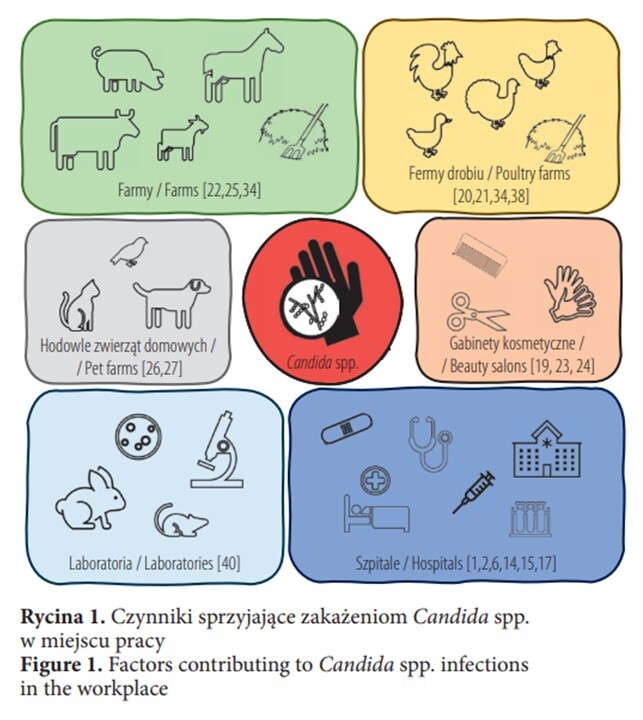Online first
Current issue
Archive
Most cited in 2024
About the Journal
Editorial Office
Editorial Board
Copyright and self-archiving policy
Information clause on the processing of personal data
Declaration of accessibility
Instructions for Authors
Instructions for Reviewers
Contact
Reviewers
2024
2023
2022
2020
2021
2019
2018
2017
2016
2015
2014
2013
Editing and translations
REVIEW PAPER
Candida species at the workplace: microbiota component, opportunistic pathogen and zoonotic agent
1
Akademia Bialska im. Jana Pawła II / John Paul II University in Biała Podlaska, Biała Podlaska, Poland (Wydział Nauk o Zdrowiu / Faculty of Health Sciences)
2
Akademia Bialska im. Jana Pawła II / John Paul II University in Biała Podlaska, Biała Podlaska, Poland (Wydział Nauk Technicznych / Faculty of Technical Sciences)
Online publication date: 2023-10-23
Corresponding author
Małgorzata Tokarska-Rodak
Akademia Bialska im. Jana Pawła II, Wydział Nauk o Zdrowiu, ul. Sidorska 95/97, 21-500 Biała Podlaska
Akademia Bialska im. Jana Pawła II, Wydział Nauk o Zdrowiu, ul. Sidorska 95/97, 21-500 Biała Podlaska
Med Pr Work Health Saf. 2023;74(5):425-33
KEYWORDS
TOPICS
ABSTRACT
Candida spp. isolated from both humans and animals have a similar genotype. Properties of Candida spp. specific for different host species have not been isolated, followed by studies indicating that animals can be a reservoir of these fungi for humans. Occupational exposure concerns workers who have direct contact with farm animals, i.e., farmers, breeders, veterinarians, farm technicians. Hand dermatitis and fungal infection may be caused by prolonged exposure to water and occlusive gloves. The risk of fungal infection is estimated to be high for seafood workers, florists, hairdressers, bakers and cooks, gastronomy workers and healthcare workers. Even though Candida spp. are effective as saprophytic, in the event of a weakening of the function or disturbance of homeostasis, the risk of developing an additional form of candidiasis is increasing due to the intensification of animal production, environmental changes and the excessive use of antibiotics to treat infections in humans and animals. Employers and workers should adopt appropriate strategies to reduce factors conductive to Candida spp. infection at professional work. Med Pr Work Health Saf. 2023;74(5):425–33.
We process personal data collected when visiting the website. The function of obtaining information about users and their behavior is carried out by voluntarily entered information in forms and saving cookies in end devices. Data, including cookies, are used to provide services, improve the user experience and to analyze the traffic in accordance with the Privacy policy. Data are also collected and processed by Google Analytics tool (more).
You can change cookies settings in your browser. Restricted use of cookies in the browser configuration may affect some functionalities of the website.
You can change cookies settings in your browser. Restricted use of cookies in the browser configuration may affect some functionalities of the website.






